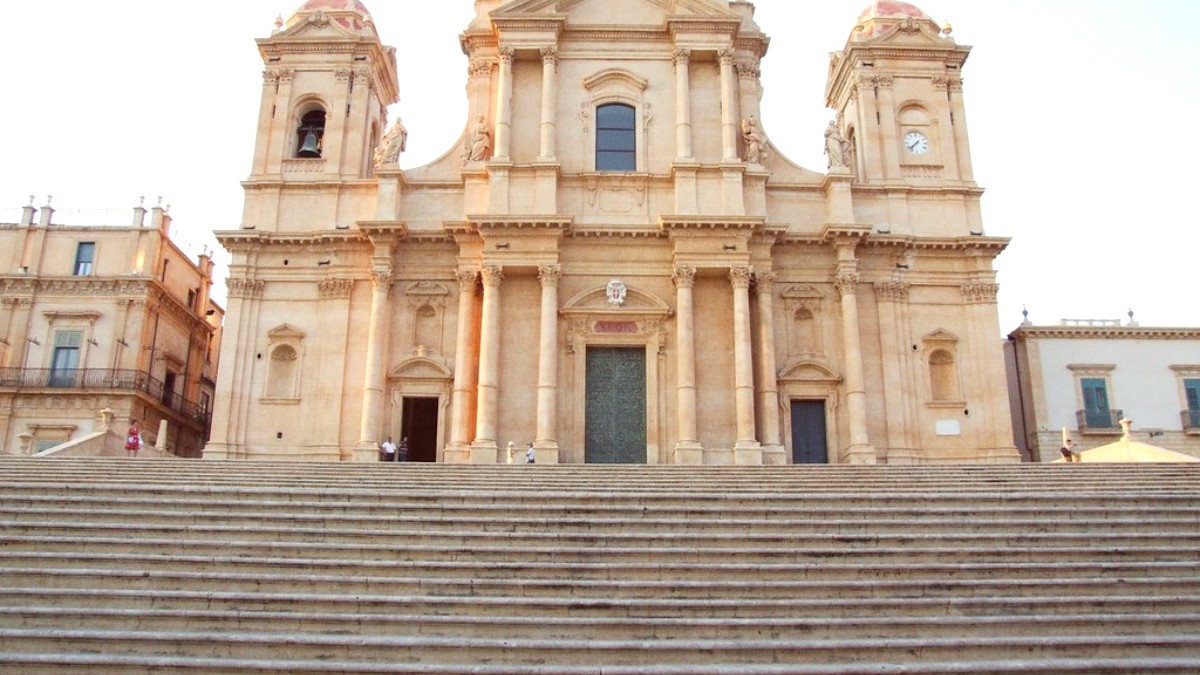
Sicily, Italy
Summer (June - August): Temperatures typically span 25°C to 35°C (77°F to 95°F). Heatwaves may push temperatures beyond 40°C (104°F). Rainfall rarely occurs. Coastal areas experience higher humidity. The sun shines brightly, providing long daylight hours for exploration.
Winter (December - February): Temperatures stay mild, usually between 8°C to 15°C (46°F to 59°F). This period is the wettest, with occasional heavy showers. Despite the rain, many days deliver clear skies and sunshine.
Beach Activities and Swimming: Plan beach days from June to early October. The sea warms in June and stays pleasant through September.
Sightseeing and Exploring Baroque Towns: April, May, September, and October deliver the finest temperatures for walking and outdoor exploration. Light during these months fosters good conditions for photography.
Warmest, most crowded
Warmest weather for beaches and swimming. Events and festivals occur.
Very hot temperatures may make sightseeing uncomfortable. Accommodation and flight prices are at their highest. Crowds are larger.
Pleasant, fewer crowds
Pleasant temperatures create ideal conditions for sightseeing. Fewer crowds. Prices are lower. Spring brings blooming landscapes.
Early spring or late autumn might bring some rain. The sea may feel cool for swimming.
Lowest prices, fewer tourists
Lowest prices for travel and lodging. Very few tourists, fostering an authentic local experience. Weather stays mild.
Cooler temperatures and a higher chance of rain. Some seasonal businesses may close. Daylight hours shorten.
Noto experiences extreme heatwaves in July and August. These periods call for careful planning. Stay hydrated by drinking plenty of water, utilize High-SPF sunscreen, wear a hat, and seek shade during peak sun hours (1 PM - 4 PM). Consider scheduling indoor activities or relaxing at your accommodation during the hottest part of the day.
While Noto does not experience monsoons or hurricanes, intense thunderstorms may occur during autumn and winter, bringing heavy rain for short periods. Review local forecasts during these months.
Spring (April-May) and autumn (September-October) deliver comfortable temperatures.
Enjoyable year-round. Spring and autumn hold the comfort of pleasant weather for outdoor dining.
Italy is a member of the Schengen Area, a group of 27 European countries that have abolished passport and other border control at their mutual borders. Entry requirements for Noto, and for all of Italy, are based on your nationality.
Citizens from many countries, including the United States, Canada, Australia, the United Kingdom, and many others, do not need a visa for short stays (up to 90 days within any 180-day period) for tourism or business purposes in the Schengen Area.
Citizens of countries not on the visa-exempt list must apply for a Schengen Visa (Type C) at the Italian embassy or consulate in their home country. Consider services like IVisa or VisaHQ for assistance.
Upon arrival at your first port of entry into the Schengen Area (which might be in another European country before you fly to Sicily), you will proceed through standard passport control. Border officers may inquire about your purpose of travel, duration of stay, and proof of onward travel or funds.
Costs in Noto fluctuate based on your travel style, accommodation choices, and dining preferences.
Currency: The Euro (EUR, €) functions as the currency in Noto, Sicily, and throughout Italy.
ATMs (Bancomat): You will find ATMs widely available in Noto, particularly in the town center and near banks. These present the simplest way to get cash. Before your trip, inform your bank of your travel plans to prevent card holds due to suspicious activity.
Expect around €40 - €70 per day for a hostel bed, self-catering meals from markets, and walking for transportation.
Hostel/Basic B&B (€25-€40). Street food/market meals (€10-€20).
Limited dining out. Minimal paid attractions.
Anticipate €80 - €150 per day for comfortable B&Bs, dining at local trattorias, and occasional transport.
Mid-range B&B/hotel (€50-€90). Trattoria meals (€30-€50).
Private transfers generally avoided. Strict luxury limits.
Over €200 per day for boutique hotels, fine dining, and private transport or tours.
Boutique hotel/luxury agriturismo (€120+). Fine dining (€70+).
Budget constraints become less of a consideration.
| Category | Item | Price Range |
|---|---|---|
| Transportation | Local bus ticket | €1.00 - €2.00 |
| Transportation | Interbus (Noto to Syracuse, one-way) | ~€6.00 |
| Attractions | Palazzo Nicolaci di Villadorata | €5.00 - €10.00 |
Sicily holds general safety, but awareness and preparation make a trip smoother.
Travelers from most Western countries do not need specific vaccinations for entry into Italy.
Ensure routine vaccinations (MMR, Diphtheria-Tetanus-Pertussis, Polio, Chickenpox) are current.
Consult your doctor or a travel clinic 4-6 weeks before your trip for personal recommendations.
Sunburn and Dehydration Prevention
High summer temperatures are common. Utilize High-SPF sunscreen, wear a Wide-brimmed hat, seek shade during the hottest parts of the day, and drink plenty of water. Carry a Reusable water bottle and refill it often.
Mosquitoes are more prevalent during warmer months. Utilize Insect repellent, especially at dawn and dusk.
Traveler's diarrhea risk is generally low due to high hygiene standards. Practice good hand hygiene.
Italy operates a national healthcare service (SSN). EU citizens with a valid European Health Insurance Card (EHIC) may access state healthcare services.
Purchase comprehensive travel insurance with good medical coverage. This insurance should cover medical emergencies, including potential medical evacuation. Consider Insubuy for medical and travel coverage for US visitors.
The single European emergency number is 112. Dial this number for all emergencies: ambulance, police, or fire services. Operators often speak multiple languages.
Noto is a very safe town status. The historic center, largely pedestrianized, experiences a low crime rate.
Food safety standards in Italy are high. Most restaurants and food vendors maintain good hygiene practices.
Tap water in Noto generally holds safety for drinking. Many public fountains deliver potable water.
Food safety standards are generally high in Italy. Choose busy stalls for street food to confirm freshness.
The risk is generally low. Practice good hand hygiene. Over-the-counter anti-diarrhea medication may offer relief for mild symptoms.